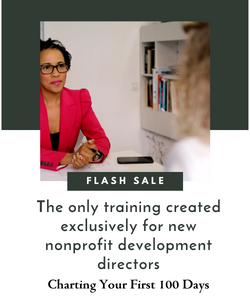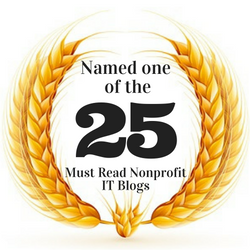Give Local America, a single-day, online-only event that aims to “mobilize widespread individual giving on a local level,” happened on May 3rd. This annual rally brought thousands of people together to support local nonprofits in their communities. For the third consecutive year, participating  community foundations encouraged local nonprofits to get involved. GLA is still in the process of tallying the 2016 results. 2014 and 2015 totaled 53 million and 68 million respectively. Payments are processed through an online fundraising platform courtesy of Kimbia, which is headquartered in Austin, Texas. After processing fees, many nonprofits receive 94% of the donation.
community foundations encouraged local nonprofits to get involved. GLA is still in the process of tallying the 2016 results. 2014 and 2015 totaled 53 million and 68 million respectively. Payments are processed through an online fundraising platform courtesy of Kimbia, which is headquartered in Austin, Texas. After processing fees, many nonprofits receive 94% of the donation.
This year, Kimbia glitched out in a major way. GLA went off seamlessly for ten hours and $20 million dollars before it hiccuped due to a hardware issue, causing delays in processing the payments and frustrating a lot of people. According to Kimbia:
“The root cause of the issue now appears to be a hardware issue on one of our hosted database nodes which caused a cascading effect, impacting our ability to deliver forms and process donations that was further exacerbated by new functionality related to leaderboards, prizes and mobile applications.
We sincerely apologize to all of our community partners, participating nonprofits, and donors.”
Whatever that means.
Scores of disappointed nonprofit staff posted on the Kimbia Facebook page:
“6.9% and “We are a team of passionate individuals that are absolutely dedicated to supporting the missions of nonprofits across the country.” They don’t certainly go together.”
“Disappointed first-time donors are hard to recover after a failure like this. My heart breaks for the myriad of non-profits who will take crushing losses today.”
“I would be a little concerned asking my donors to go through this nightmare again.”
“This has definitely been a huge blow to our fundraising and development plan for the year. There’s simply now way to recoup the funds and enthusiasm lost.”
In response to the snafu, many nonprofits opted to extend the occasion well into the next day, and some started phone banks. Some organizations did have backup systems in place: “We already started directing folks to our own giving platform. So much work goes into making a big push for today. At a small nonprofit, we can’t afford to have those efforts wasted.”
If you’ve been following me for awhile, you may have noticed that I rarely spotlight these “giving days.” At least, not with the enthusiasm of some of my fellow fundraisers. Marguerite Oestreicher, Chief Advancement Officer of Habitat for Humanity in New Orleans, has shed some light on why I feel how I do. Of her GLA experience, she says:
“We had a strong promotional campaign in place — complete with a celebrity endorsement and participation and — based on early hours results — were on track to double last year’s goal until it all came to a screeching halt mid morning. We’ve ended up at 2/3 of goal but deeply saddened for the many smaller nonprofits that had invested heavily and rely on this day to make their budgets. Some we know achieved only a small percentage of goals. When I think of the countless hours of effort and energy expended and the damage done in terms of donor relationships, it makes me physically ill.
Our local community foundation worked their tails off to promote the event and did everything they could to make it successful. We’re all heartbroken over Kimbia’s system failure. Kimbia needs to be apologizing large and loud — haven’t really seen that yet!”
Ouch. Marguerite provides some valuable insight here and highlights the inherent problems that come with putting all your fundraising eggs into a giving day basket. You’re investing so much time and energy into maximizing the potential of one day, that your focus is often diverted from what really matters: long-term sustainability. Hope may be on your radar, but the future scarcely is. How Kimbia behaves is beyond your control, and so are plenty of other factors. May 3rd marked the third GLA, so who knows what next year’s will look like?
Am I preaching abstinence from giving days? Absolutely not. But I am imploring you to proceed with caution and do it right. That way, should you encounter a snafu from Kimbia or one of its counterparts, it won’t break your heart (or your bank).
Take a pointer or two from Joyce Meyer of Western Heritage Center. Despite the glitches, her organization still found success with GLA, on their own terms. She says:
“This was the first year that our organization, The Western Heritage Center, in Billings, Montana had the opportunity to participate in Give Local. Our friends were frustrated with the online giving problems. Luckily we had orchestrated a small happening at our facility and people came to enjoy refreshments and donated to us then and there.
Even with all the problems that we experienced it was an eye opener and beneficial for us to be participants. We felt it was a worthwhile funding event, especially for small organizations such as ours.”
Do you see what Western Heritage Center did here? They seized the opportunity to reframe GLA as a donor-focused experience, and it gave them an edge. They created a welcoming, friendly atmosphere that encouraged enthusiastic giving from their supporters. They opened their doors to engagement and communication, and they succeeded, Kimbia hiccups and all. They took ownership of the situation and focused on what they could control: treating their donors with the utmost kindness.
Which brings me to this, something I’ll never quit preaching about, because I want it to fizz in your brain: Fundraising is all about your donors. Keeping your eye focused on the donor, and the donor experience, should be at the forefront of everything that you do. How are your internal systems set up to welcome new donors and grow the relationship (and their support)? How are you creating a thriving fundraising system, one that includes emotional storytelling, communications (both direct mail and online), your technology infrastructure, stewardship, and creating a culture of abundance that permeates every aspect of your organization’s life (and future)?
If you are participating in giving days, be sure, too, to control what you can. One of my subscribers noted, “Next year we may take advantage of the timing/marketing of the giving day but secure our own 1:1 matching and take donations directly. In addition to the glitch, the processing fees were insanely ridiculous and it won’t take donors long to figure out that their processing fees are essentially skimming for a third party vendor. There was a huge jump in fees this year—to 4.99% of each transaction. ”
So again, no — I don’t focus much on giving days and other events. Because while their intentions are good, in the end they are simply diversions. Too often, I see nonprofits faltering when it comes to the basics, because the reality is, the basics aren’t so basic. They require time, attention, effort, brainpower, and dedication. But once you’ve got them down pat and well-oiled systems in place, then you can feel free to look toward this other stuff (Give Local America, Giving Tuesday, etc.).
But not before. No, not before.

















 I can’t wait to meet with you personally.
I can’t wait to meet with you personally.
Comments on this entry are closed.